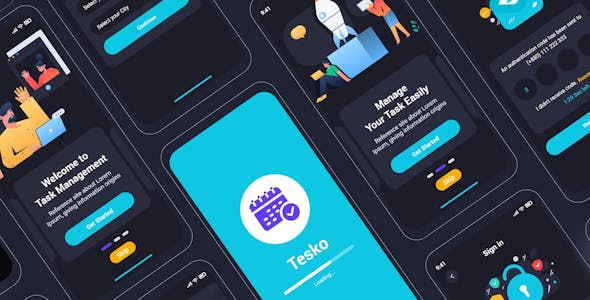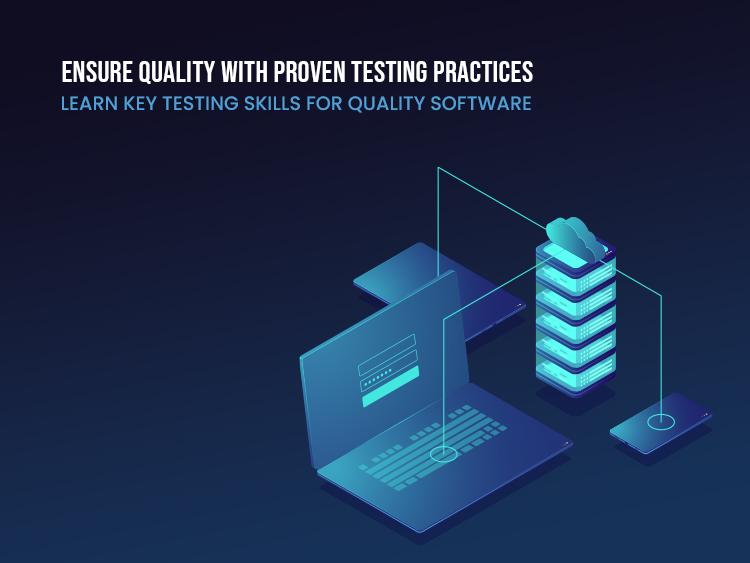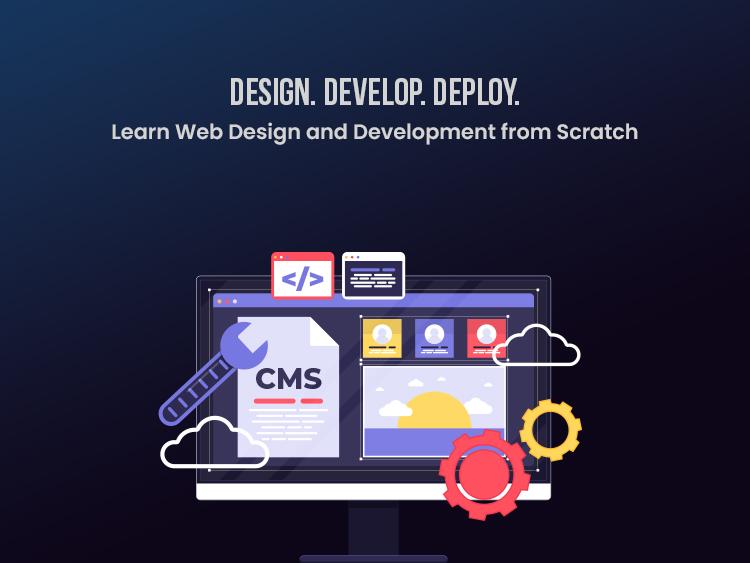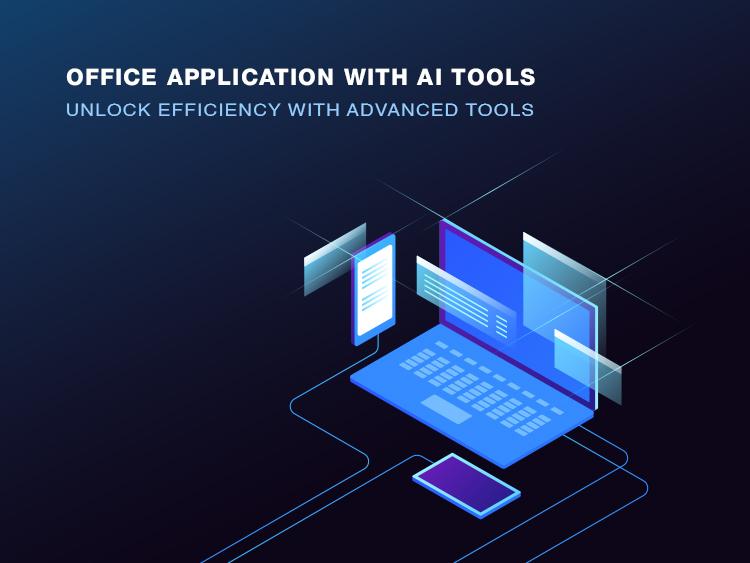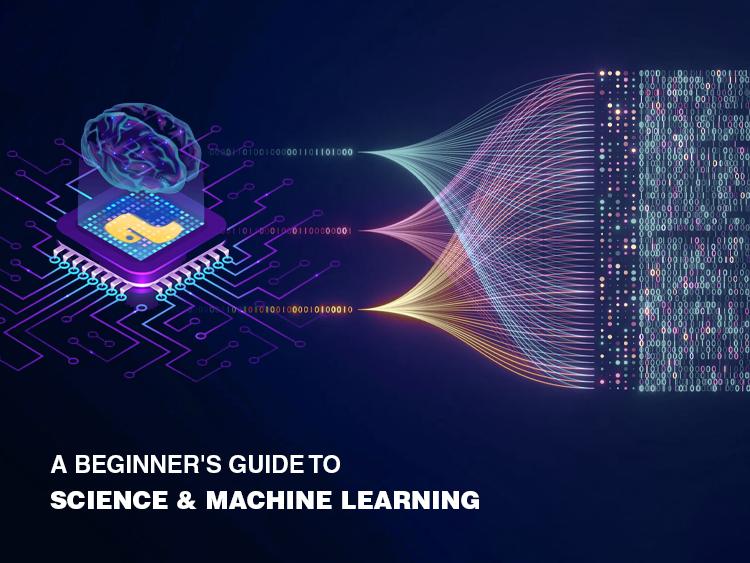
Full Stack Web Development with PHP, Laravel & Vue JS
Learn PHP for its simplicity and versatility. This open-source language, paired with Laravel and Vue, creates scalable, efficient solutions, perfect for managing large databases and streamlining development.
Duration
6 Month
Lectures
70+
Projects
10

Course Overview
Learn to build complete websites with Laravel, PHP, and VUE through practical projects, covering everything from HTML to JavaScript. Gain a solid foundation and tackle real-world challenges efficiently.
Course Curriculum
- Introduction to CSS syntax and selectors, Understanding the box model, Working with different units (px, em, rem, etc.), CSS inheritance and specificity, Media queries for responsive layouts, Flexbox and Grid layouts for responsive designs, Responsive images and videos, Viewport meta tag and its importance, Introduction to preprocessors like Sass or Less, Variables, mixins, and nesting in Sass, Using Sass with Laravel Mix, Overview of popular CSS frameworks like Bootstrap or Tailwind CSS, Integrating CSS frameworks into Laravel projects, Customizing and extending CSS frameworks
- Introduction to CSS syntax and selectors, Understanding the box model, Working with different units (px, em, rem, etc.), CSS inheritance and specificity, Media queries for responsive layouts, Flexbox and Grid layouts for responsive designs, Responsive images and videos, Viewport meta tag and its importance, Introduction to preprocessors like Sass or Less, Variables, mixins, and nesting in Sass, Using Sass with Laravel Mix, Overview of popular CSS frameworks like Bootstrap or Tailwind CSS, Integrating CSS frameworks into Laravel projects, Customizing and extending CSS frameworks
• What is the web?
• What is a server computer?
• Browser-in-device internet media How does server-side/back-end work?
• What is the client site/front end?
• What is a static website?"
• "What is a dynamic website?
• What is a dynamic web application?
• What is Web UI/UX?
• What is web template/theme development?
• What is web front-end development?
• What is web back-end development?
• What is full-stack web development?
• Introduction to PHP, Laravel, Vue
• Quiz
• PHP Environment Setup-debugging, Problem solve, Variable, Constant, Comments, Printing output, Addition Subtraction Multiplication Division in PHP, PHP printf, sprint.
• If Else, Nested If Else, Ternary Operators, Nested Ternary Operators, switch case, VSCode Power Tips, VSCode Settings & Extensions for PHP-MySQL Web Development.
• A large assignment and live test will be based on what has been discussed in Module 1 to Module 4. You can save yourself.
• Assignment
• Test
• Different types of loops, Multiple Stepping in For Loops, Continue and breaking between loops, Printing the Fibonacci Series with Loops, Why & How Functions in PHP, Writing, Function parameters, Type hinting-checking, Understanding Function Return Type
• Call Back Function Dividing a large function into smaller functions, Recursion and Recursive Functions, Printing Fibonacci Series Using Recursive Functions, Variable Scope in PHP Function
• Quiz
• Array, Array Manipulation, Detailed discussion of associative arrays, String to Array and Array to String, Multiple Delimiters, Multidimensional or nested arrays
• Decluttering an array, Concatenating, Sorting, Indexing, Searching, Array Utility Functions Walk, Map, Filter, Reduce, shuffling, ASCII Code, Accessing characters within a string, String Reversing, Breaking, Searching, trimming, replacing.
• Object-Oriented Programming Structure, Classes, Objects, Methods, and Properties, Public and Private Methods and Properties of Classes, Writing a Real-Life Useful Class, Inheritance, Abstract, Static, Final.
• Better code with OOP by forcing, Interfaces & Its practical Example, Magic Methods, Object Cloning, Conversion, Comparing, Detailed discussion on early and late binding, Namespaces, Method Overloading, and Overriding.
• Quiz.
• File Read, Write, Delete, Append, Processing data in files using serialized arrays, JSON format, Creating Sessions and Working with Session Data, Simple User Authentication with Sessions, with Basic Discussion of Hashes
• Details on cookies & session storage, PHP error settings, and error reporting, PHP Error Log, Custom Error Handlers, Fatal Error Handlers, Discussion of error logs
• Quiz
• A major assignment and live test will be based on what has been discussed in Module 6 to Module 9. You can save yourself.
• Assignment
• Test
• Details on Database, Tables, Columns, Properties, SQL Query writing select, delete, insert, update, Grouping, Sorting, Limiting, SQL Aggregator Functions.
• SQL inner join, left join, right join , One-to-One (1:1), One-to-Many (1:N),Only-One-to-Many (1:N), Many-to-Many (N:M), Self-Referencing Relationship
• File Read, Write, Delete, Append, Processing data in files using serialized arrays, JSON format, Creating Sessions and Working with Session Data , Simple User Authentication with Sessions, with Basic Discussion of Hashes
• Details on cookies & session storage, PHP error settings and error reporting, PHP Error Log, Custom Error Handlers, Fatal Error Handlers, Discussion of error logs
• Request, Parameter, JSON Body, Request Header Working With Form Data & File Upload , Request IP Address And Content, Working With Request Cookie
• Different Response Format, Response JSON , Redirect Response, Binary And File Download Response , Cookie Response, Response Header, Response View
• Middleware Structure, Request Verification, Request Redirect, Middleware Apply For Route And Route Group, For Whole Application, Middleware Manipulate Request Header
• Rate Limiting Middleware Controller Concept in Details, Single Action Controller, Resource Controller, Controller Constructor, Laravel Log Feature, Working with Session Set, Get, Clear
• QUIZ
• A major assignment and live test will be based on what has been discussed in Module 11 to Module 14. You can save yourself.
• Assignment
• Test
• Understanding Blade Template Engine & Attributes Blade if-else, switch-case, loop, master layout, extend, include, Blade yield, content, Blade data passing, Asset binding, Including blade subview
• HTML CSS to Laravel Blade Landing Page Project, Including master layout, sub view & project structure
• QUIZ
• Exploring Migrations, Naming conventions, Migration Structure, Database columns types in migration, working with different columns types and attributes, Table Column Modification Add, Rename, Drop
• Details on Database Relationship, One-to-One (1:1), One-to-Many (1: N), Only-One-to-Many (1: N), Many-to-Many (N: M), Self-Referencing Relationship, Details on ERD Diagram, Details on Relationship Constraint - RESTRICT, CASCADE, E-commerce Database Project
• QUIZ
• Why and how Query Builder works, Retrieving All Rows, Single Rows, Aggregates, Select Clauses, Where Clauses, Advance Clauses, Inner Join, Left Right, Right Join
• Cross Join Advanced Join Clauses, Unions, Order, Latest Oldest, Skip, Take, Limit, Group By And Having , Insert, Update, Delete, Upsert, Pagination, Custom Pagination
• QUIZ
• Why and how Eloquent ORM works , Model Naming Conventions Insert, Update, Delete, Fillable Properties, Increment Decrement, Retrieving Rows Columns, Aggregation, Select Clause, Where Clause
• Advance Clause, Ordering Grouping Limiting , Pagination, Custom Pagination , One-to-One (1:1), One-to-Many (1:N), Only-One-to-Many (1:N), Many-to-Many (N: M), Self-Referencing Relationship , Details On Database & Model Design
• QUIZ
• A major assignment and live test will be based on what has been discussed in Module 16 to Module 19. You can save yourself.
• Assignment
• Test
• VS Code JavaScript tips, Execution context, JavaScript, Variables, operators, comments, Data types, if-else statements, switch case statements, for loops, While loops, do-while loops, for-in loops
• JavaScript function, Real-life use cases, Passing arguments, Returning, values, Named functions, Anonymous functions, Arrow functions, Immediately Invoked, Function Expressions (IIFE), Generator functions, Recursive functions
• JavaScript Object & JSON, Arrays and Array Methods, Strings and String Operations, JavaScript Date, Math, Number, Window object, Navigator object
• JavaScript events, JavaScript DOM in detail, DOM HTML elements, DOM manipulation, Form handling, DOM element creation, Appending elements, Query selector
• QUIZ
• Why and how Eloquent ORM works , Model Naming Conventions Insert, Update, Delete, Fillable Properties, Increment Decrement, Retrieving Rows Columns, Aggregation, Select Clause, Where Clause
• Advance Clause, Ordering Grouping Limiting , Pagination, Custom Pagination , One-to-One (1:1), One-to-Many (1:N), Only-One-to-Many (1:N), Many-to-Many (N: M), Self-Referencing Relationship, Details On Database & Model Design
• QUIZ
• Introduction to Vue.js, setting up the development environment, configuring Vue CLI, understanding Vue.js project structure, exploring Vue.js component architecture, creating and registering Vue components, understanding Vue component lifecycle hooks, utilizing data binding and interpolation, handling user input with directives, implementing event handling and listeners, working with computed properties and watchers, understanding Vue.js template syntax, exploring Vue.js directives such as v-if, v-for, and v-bind, integrating Vue.js with HTML and CSS, building reusable and modular Vue.js components, organizing and managing Vue.js project files and folders, deploying Vue.js applications. Understanding Vue.js template syntax, exploring Vue.js components, creating and using Vue.js components, passing data to components with props, defining and validating props, using props to customize component behavior, emitting custom events from child components, communicating between parent and child components with props and events, understanding component reactivity and data flow, utilizing computed properties and watchers in components, handling dynamic props and prop changes, passing functions as props, destructuring props in components, working with scoped slots for flexible component composition, utilizing v-model directive for two-way data binding in components, using props for component configuration and customization.
• Create New React App Using Vite | Project Run And Build Command | Dive Inside React Project Structure | Organizing File Folders | Best VS Code Extensions And Settings For React Development | Primary Understanding On Component | JSX And Conventions | JSX Short Hand If else | JSX Immediately invoked function | JSX Loop Inside | JSX Why use Map Why Others loop not | JSX Conditional Rendering Using If Else | Using Switch Statement | Using Ternary Operator | Using Logical && | Using Immediately Invoked Function | Passing properties to child component |Managing Click Event | Managing Form Submit
• A major assignment and live test will be based on what has been discussed in Module 21 to Module 24. You can save yourself.
• Assignment
• Test
• Handling events in Vue.js, binding event listeners with v-on directive, utilizing event modifiers for event handling, capturing and bubbling events, handling DOM events like click, input, submit, etc., passing arguments to event handlers, accessing event properties and methods within event handlers, using inline event handlers and methods for event handling, binding form input values with v-model directive, achieving two-way data binding with form inputs, handling input validations and transformations with modifiers, utilizing lifecycle hooks for component initialization and destruction, understanding Vue.js component lifecycle stages such as creation, mounting, updating, and destruction, using mounted and destroyed hooks for initialization and cleanup tasks, leveraging other lifecycle hooks like created, beforeMount, updated, and beforeDestroy for advanced component behavior, handling asynchronous operations and side effects in lifecycle hooks, optimizing component performance with lifecycle hooks and computed properties. Implementing routing in Vue.js applications with Vue Router, configuring routes and nested routes, defining route components and dynamic route parameters, navigating between routes with router-link component and programmatic navigation, handling route transitions and animations, utilizing route guards for authentication and authorization, implementing route navigation guards like beforeEach, afterEach, beforeEnter, and beforeLeave, lazy loading routes and components with Vue Router, implementing client-side routing with hash mode or history mode, integrating Ajax API calls with Vue.js applications, making HTTP requests with Axios or Vue Resource, handling API responses and errors, configuring global Axios settings for API calls, managing loading and error states in Vue components during API calls, implementing pagination and filtering with Ajax APIs, handling authentication and authorization with API endpoints, securing API requests with authentication tokens or cookies, optimizing API requests with caching and debouncing techniques.
• Integrating Laravel with Inertia.js for Vue.js applications, setting up Inertia.js in Laravel projects, installing and configuring Inertia.js and Vue.js dependencies, creating Vue.js components for Inertia.js pages, understanding the structure of Inertia.js components and layouts, using Inertia.js links for client-side navigation without full page reloads, passing data from Laravel controllers to Vue.js components with Inertia.js, Handling form submissions and validation with Inertia.js, implementing server-side routing with Laravel controllers and routes, leveraging Laravel routes and controllers for API endpoints in Inertia.js applications, managing authentication and authorization with Laravel Passport or Sanctum in Inertia.js applications, optimizing performance with Inertia.js lazy loading and chunking, utilizing Vue.js features like computed properties, methods, and watchers in Inertia.js components, debugging and troubleshooting common issues in Inertia.js and Vue.js integration.
• Working process on the agile method, Laravel Project Architecture, Multiuser application structure, CMS structure, JWT Authentication, Token Encode-Decode, Store,
• Login, Registration, Forget Password, Reset Password, Multiuser application profile management, Inventory Customer Category & Product Management, Inventory Invoice & Printing, Report & Dashboard Summary Generation
• Working with Login, Registration, Forget Password, Reset Password, Profile management, working with Category, Product, Invoice, Report, Dashboard Summary Front End
• A major assignment and live test will be based on what has been discussed in Module 26 to Module 29. You can save yourself.
• Assignment
• Test
• Product Brand, Category, Latest Product, Popular product, Featured, Slider, Product Details , User Login Using OTP & Profile, Product Cart List management, Wish List management
• Product User Review & Rating System, Cart Checkout using SSL Commerz payment, Order history & Invoice generation
• Product Brand, Category, Latest Product, Popular product, Featured, Slider, Product Details User Login Using OTP & Profile, Product Cart List management,
• Wish List management, Product User Review & Rating System, Cart Checkout using SSL Commerz payment, Order history & Invoice generation
• Resume Writing Tips, Cover Letter Essentials, Job Search Strategies, Interview Preparation, Networking Skills, Online Presence, Negotiating Job Offers, Remote Work Opportunities, Freelancing and Gig Economy
• Introduction to Codecanyon Marketplace, Seller Guidelines, Product Submission Process, Quality Standards, Copyright and Licensing, Pricing Strategies, Support and Maintenance, Promotion and Marketing, Review and Feedback, Policy Enforcement
• Assignment
• Test
• Importance of software engineering, Requirement Engineering, Software Development Lifecycle, Waterfall Model, Agile Model, RAD Model, Incremental Mode, Big Bang Model
• Project Management, Planning, Scheduling, ERD, Software Design, Coding, Software Quality Assurance, Software Maintenance
• Git Installation & Environment Setup , Git Tools & Terminology, Basic Git Commands , Git Branching Model, Staging & commits-Init, Add, Commit, Clone, Stash, Ignore, Fork, Repository, Index, Head, Origin Master, Remote, Tags, Upstream & Downstream
• Undoing changes- Checkout, Revert, Reset, Rm, Cherry-pick, Inspecting changes- Log, Diff, Status, Branching & Merging- Branch, Merge & Merge Conflict ,Rebase ,Squash, Collaborating- Fetch, Pull, Push, Interview Questions
• Beginner Project Started, Project Idea, Requirements, Project UI UX Completion, Project Database Design, Project Technology Selection, Project Development Steps, Migration, and Database.
• Taking Dummy Data, Controller Methods Routes, Query Writings, Back End Testing, Blade Component Design, HTML to Blade Conversion, Ajax Call, SEO Properties
• Introduction to PHP-MySQL Raw Project,Setting up a PHP development environment with MySQL, Understanding PDO (PHP Data Objects) , Connecting PHP to MySQL using PDO, CRUD operations (Create, Read, Update, Delete) with PDO , Error handling with PDO in PHP, Using prepared statements for secure database interaction, Introduction to MySQL Stored Procedures , Creating and calling Stored Procedures in MySQL, Passing parameters to Stored Procedures from PHP, Retrieving data from Stored Procedures in PHP, Updating data through Stored Procedures in PHP, Deleting data using Stored Procedures in PHP, Advantages of using Stored Procedures, Best practices for using PDO and Stored Procedures together in a PHP-MySQL project, Transaction management with PDO and Stored Procedures, Securing your PHP-MySQL application against SQL injection attacks, Optimizing database performance with Stored Procedures, Handling large datasets efficiently with Stored Procedures, Advanced topics in PDO and Stored Procedures for PHP-MySQL projects.
• Sending emails using PHP, covering SMTP setup, email headers, HTML and plain text email formatting, attachments, handling email responses, SPF and DKIM authentication, email templates, and advanced email delivery techniques.
• PHP's integration with SQLite, covering SQLite database setup, CRUD operations in PHP, transactions and error handling, SQLite security considerations, performance optimization techniques, and building a practical PHP application using SQLite as the backend database.
• PHP with Redis, exploring Redis server setup, basic data manipulation operations using PHP, advanced Redis features such as Pub/Sub and transactions, caching strategies and performance optimization with Redis, handling concurrency and race conditions, and building scalable PHP applications leveraging Redis as a key-value store.
• Utilizing CURL library in PHP, covering CURL basics, making HTTP requests, handling response data, setting custom headers and options, working with cookies and sessions, implementing authentication methods, SSL certificate verification, error handling, and integrating CURL with third-party APIs for data retrieval and interaction within PHP applications.
• Cryptographic techniques and hashing algorithms in PHP, exploring encryption and decryption methods, secure storage and transmission of sensitive data, generating and verifying digital signatures, password hashing best practices, salting and pepper techniques, implementing two-factor authentication, and mitigating common cryptographic vulnerabilities in PHP applications
• Design patterns in PHP, including Singleton, Factory, Abstract Factory, Builder, Adapter, Observer, Decorator, Strategy, and Dependency Injection patterns. We'll discuss their application in real-world scenarios, benefits, and trade-offs, emphasizing principles like separation of concerns, scalability, and maintainability in PHP projects.
• Fundamentals of unit testing in PHP, including setting up PHPUnit, writing test cases, assertions, fixtures, test doubles (mocks, stubs, and spies), data providers, and test suites. We'll explore test-driven development (TDD) principles, continuous integration (CI) workflows, and best practices for ensuring code quality, reliability, and maintainability through automated testing in PHP projects
• Advanced concepts and techniques in OOP with PHP, including inheritance, polymorphism, encapsulation, abstract classes, interfaces, traits, namespaces, autoloading, magic methods, design principles like SOLID, and patterns like dependency injection and factory methods. We'll explore how to leverage these concepts to build robust, modular, and maintainable PHP applications.
• SOLID principles of object-oriented design: Single Responsibility, Open/Closed, Liskov Substitution, Interface Segregation, and Dependency Inversion, How to apply each principle in PHP code, refactor existing code to adhere to SOLID principles, and design flexible and maintainable PHP applications that are easier to understand, extend, and test.
• "Efficient use of Laravel's features and conventions
• Building modular and scalable applications with Laravel's service container and dependency injection
• Implementing RESTful API endpoints with Laravel's routing and controllers
• Utilizing Laravel's Eloquent ORM for database interactions and relationships
• Writing clean, readable, and maintainable code following Laravel's coding standards and PSR recommendations
• Leveraging Laravel's built-in authentication and authorization mechanisms for secure user management
• Implementing caching, queueing, and event handling using Laravel's caching, queue, and event systems
• Testing Laravel applications effectively with PHPUnit and Laravel's testing utilities
• Deploying and maintaining Laravel applications using best practices for configuration management, environment setup, and continuous integration/deployment workflows."
• "Setting up Laravel Socialite and configuring social providers such as Facebook, GitHub, Google, and LinkedIn
• Implementing social login functionality for each provider, including authentication and user data retrieval
• Handling OAuth authentication flows and managing access tokens securely
• Customizing the login experience with Laravel Socialite's flexible configuration options
• Storing and managing user profiles retrieved from social providers in the Laravel application
• Implementing additional features such as linking multiple social accounts to a single user account
• Handling errors and edge cases in the social login process gracefully
• Best practices for security, user experience, and performance when implementing social login with Laravel Socialite."
• "Creating roles and permissions models in Laravel
• Associating roles with users and managing permissions
• Implementing middleware to restrict access to routes based on user roles
• Building an administration panel to manage roles and permissions dynamically
• Integrating role-based authorization into Laravel's authentication system
• Handling role inheritance and cascading permissions
• Implementing fine-grained access control using gates and policies
• Best practices for organizing and structuring role management logic in Laravel applications
• Securing sensitive actions and resources based on user roles to ensure proper authorization."
• "Designing the database schema for expenses, users, roles, and permissions
• Setting up Laravel authentication and implementing user registration and login functionality
• Integrating Laravel's built-in authorization features to manage user roles and permissions
• Creating CRUD (Create, Read, Update, Delete) functionality for managing expenses
• Implementing role-based access control to restrict access to certain features based on user roles (e.g., only administrators can approve expense requests)
• Building a user-friendly interface for creating, viewing, editing, and deleting expenses
• Implementing features like expense categories, filtering, and reporting to provide insights into spending habits
• Enhancing security by validating user inputs, protecting against CSRF attacks, and securing routes based on user roles
• Testing the application to ensure functionality and security requirements are met
• Deploying the expense manager project to a web server for real-world use, considering factors like scalability and performance optimization."
• Customizing email templates, sending bulk emails efficiently, implementing email queues for better performance, integrating with third-party email services like Mailgun or SendGrid, handling email events and notifications, implementing email verification and password reset functionalities, and optimizing email delivery for improved user experience
• Integrating PDF generation libraries like Dompdf or TCPDF into Laravel applications, creating dynamic PDF documents from database data or HTML templates, customizing PDF layouts and styles, adding headers, footers, and watermarks to PDFs, generating PDF reports and invoices, optimizing PDF generation performance, and securely serving PDF files to users in Laravel applications.
• Utilizing Laravel Sanctum for API authentication, covering topics such as setting up token-based authentication for SPA (Single Page Applications) and mobile apps, securing routes with Sanctum middleware, implementing stateful and stateless authentication, managing API tokens and token expiration, integrating with Laravel's built-in authentication system, handling CORS (Cross-Origin Resource Sharing) issues, and securing API endpoints against unauthorized access.
• Laravel's Breeze package, covering topics such as setting up and configuring Breeze for rapid authentication scaffolding, implementing basic authentication features like user registration, login, logout, and password reset, customizing Breeze's default authentication views and routes, integrating with Laravel's Blade templating engine, handling authentication errors and redirects, securing routes and views based on user authentication status, and extending Breeze functionality with additional features or packages.
• Leveraging Redis as a caching driver in Laravel applications. Topics covered will include setting up Redis caching in Laravel configuration files, caching data using Laravel's cache facade and Redis commands, managing cache expiration and invalidation strategies, implementing cache tags and prefixes for organized cache management, monitoring and optimizing Redis performance, handling cache fallbacks and misses gracefully, and integrating Redis cache with Laravel's queue system for background cache operations
• Basics of RESTful APIs, Setting up Laravel for API development, Authentication and Authorization, Creating Models and Migrations, Implementing CRUD Operations, Validation and Error Handling
• Testing APIs with PHPUnit, Pagination and Filtering, Implementing Relationships, Securing APIs with API Tokens, Versioning APIs, Optimizing Performance, Documenting APIs with Swagger/OpenAPI, Deployment and Continuous Integration.
• Basics of RESTful APIs, Setting up Laravel for API development, Authentication and Authorization, Creating Models and Migrations, Implementing CRUD Operations, Validation and Error Handling
• Testing APIs with PHPUnit, Pagination and Filtering, Implementing Relationships, Securing APIs with API Tokens, Versioning APIs, Optimizing Performance, Documenting APIs with Swagger/OpenAPI, Deployment and Continuous Integration.
• Basics of RESTful APIs, Setting up Laravel for API development, Authentication and Authorization, Creating Models and Migrations, Implementing CRUD Operations, Validation and Error Handling
• Testing APIs with PHPUnit, Pagination and Filtering, Implementing Relationships, Securing APIs with API Tokens, Versioning APIs, Optimizing Performance, Documenting APIs with Swagger/OpenAPI, Deployment and Continuous Integration.
• Introduction to Laravel Security, Understanding Common Web Security Threats, Implementing Authentication and Authorization, Securing Routes and Controllers, Protecting Against Cross-Site Request Forgery (CSRF), Preventing SQL Injection Attacks, Implementing Content Security Policy (CSP), Securing File Uploads, Using HTTPS and SSL/TLS Encryption, Protecting Against Cross-Site Scripting (XSS) Attacks, Implementing Two-Factor Authentication (2FA), Auditing and Logging Security Events, Secure Session Management, Role-Based Access Control (RBAC), Secure Configuration Best Practices, Securing API Endpoints, Continuous Security Monitoring and Patch Management.
• "Preparing Laravel Application for Deployment,
• Configuring CPanel Environment for Laravel,
• Setting up File Structure and Permissions,
• Creating a MySQL Database in CPanel,
• Configuring Environment Variables,
• Uploading Laravel Application Files to CPanel,
• Setting up Composer Dependencies,
• Configuring .htaccess File for Laravel,
• Configuring Cron Jobs for Laravel Scheduler,
• Configuring Laravel Queue Workers,
• Optimizing Laravel for Production Environment,
• Troubleshooting Common Deployment Issues."
• "Project Structure: Organizing files and directories according to CodeCanyon standards.
• Code Quality: Ensuring clean, readable, and well-documented code.
• Licensing: Understanding and adhering to licensing requirements for third-party libraries and assets.
• Security: Implementing security best practices to protect user data and prevent vulnerabilities.
• Performance Optimization: Optimizing code and database queries for improved performance.
• User Interface Design: Creating a visually appealing and user-friendly interface following CodeCanyon guidelines.
• Features and Functionality: Implementing features that meet the needs of potential buyers and adhering to any specific requirements set by CodeCanyon.
• Compatibility: Ensuring compatibility with the latest versions of Laravel and any required PHP extensions.
• Documentation: Providing comprehensive documentation including installation instructions, usage guidelines, and troubleshooting tips. Testing: Performing thorough testing to identify and fix any bugs or issues before submission.
• Version Control: Using version control systems like Git and providing access to the repository for buyers.
• Support: Offering timely and responsive support to buyers for any questions or issues related to the product.
• Updates and Maintenance: Committing to providing updates and maintaining the product to ensure its long-term viability.
• Submission Guidelines: Reviewing and adhering to CodeCanyon's submission guidelines and requirements.
• Review and Approval Process: Understanding the review and approval process and preparing the project accordingly for submission."
• Understanding Laravel debugging techniques, utilizing built-in error reporting and logging functionalities, leveraging Laravel Telescope for detailed debugging insights, utilizing breakpoints and step-through debugging with Xdebug, analyzing stack traces and error messages, using dd() and dump() functions for variable inspection, employing logging libraries like Monolog for advanced logging capabilities, utilizing error handling middleware for centralized error management, implementing custom error pages for better user experience, leveraging third-party debugging tools for performance profiling and memory usage analysis.
• Setting up Laravel and Vue.js environments, designing database schema, implementing user authentication and authorization, creating user panel UI, implementing CRUD operations for radio stations, designing admin panel UI, integrating API endpoints, implementing real-time updates, implementing search and filter functionalities
• Securing routes and API endpoints, implementing error handling and validation, optimizing performance, documenting API endpoints and Vue.js components, testing the application, deploying to a production server.
• Configuring the server environment, uploading application files, setting up database, configuring environment variables, installing dependencies, configuring web server, ensuring permissions, setting up SSL, testing deployment, and troubleshooting any issues.
Course Schedule
| Venue | Starting Date | Duration | Fees |
|---|---|---|---|
| Mohammadpur | 2024-11-01 | 3 Month | 30000 Tk |
Course Projects
Admission Is Going On
Enroll now to any of our Offline (On- Campus) or Online (Live Class) courses as per your suitable time.
Call This Number: 01958025050
